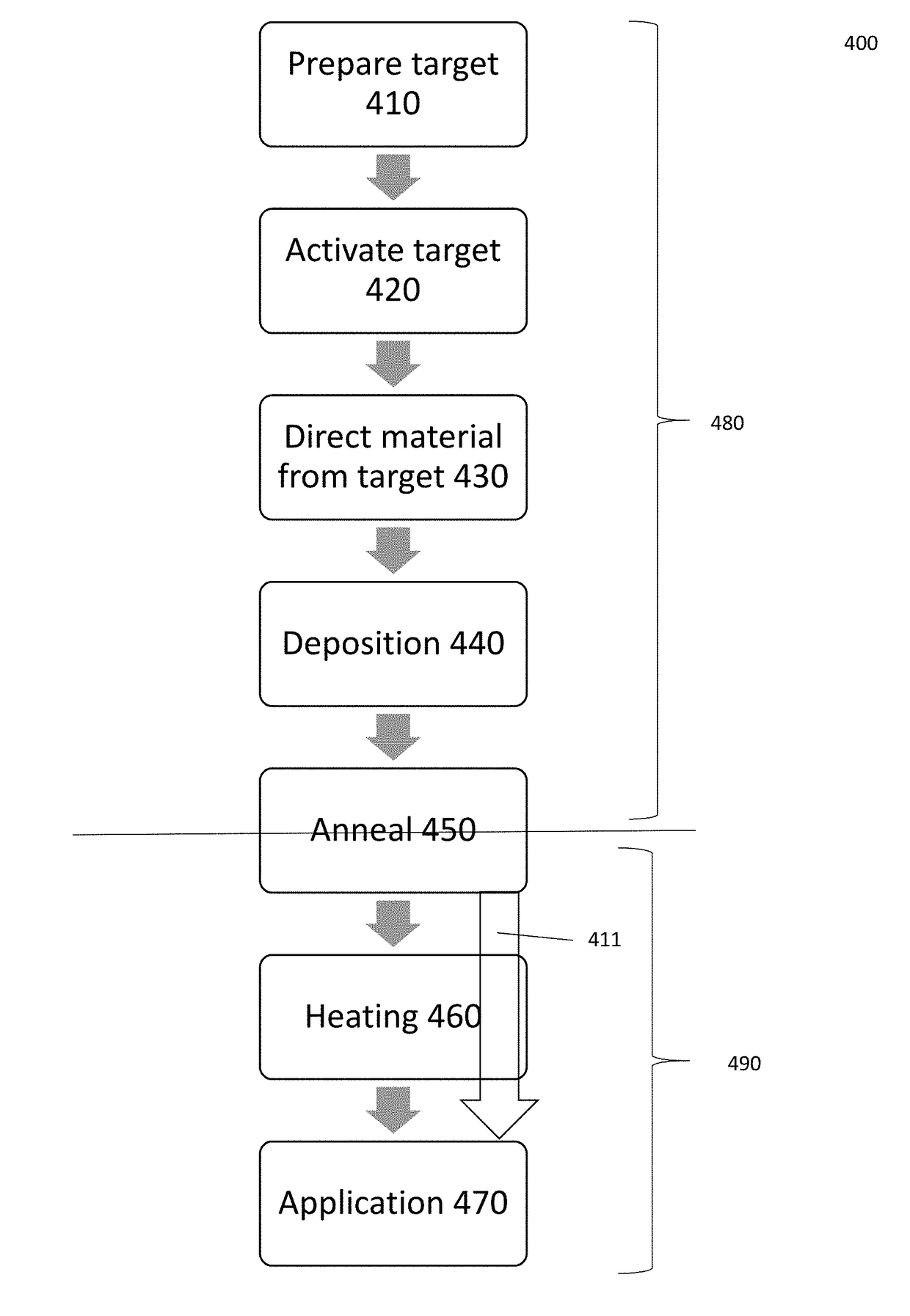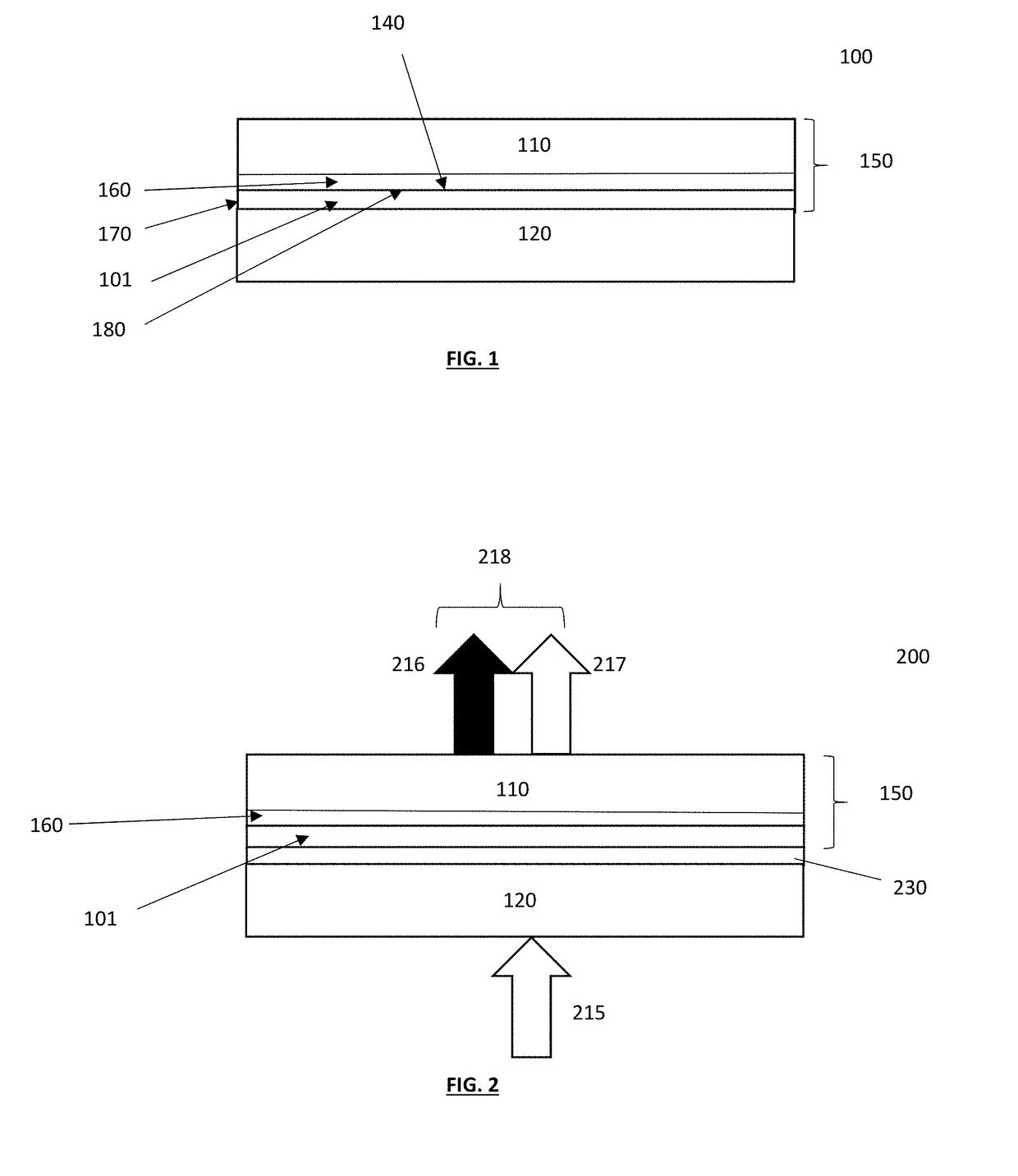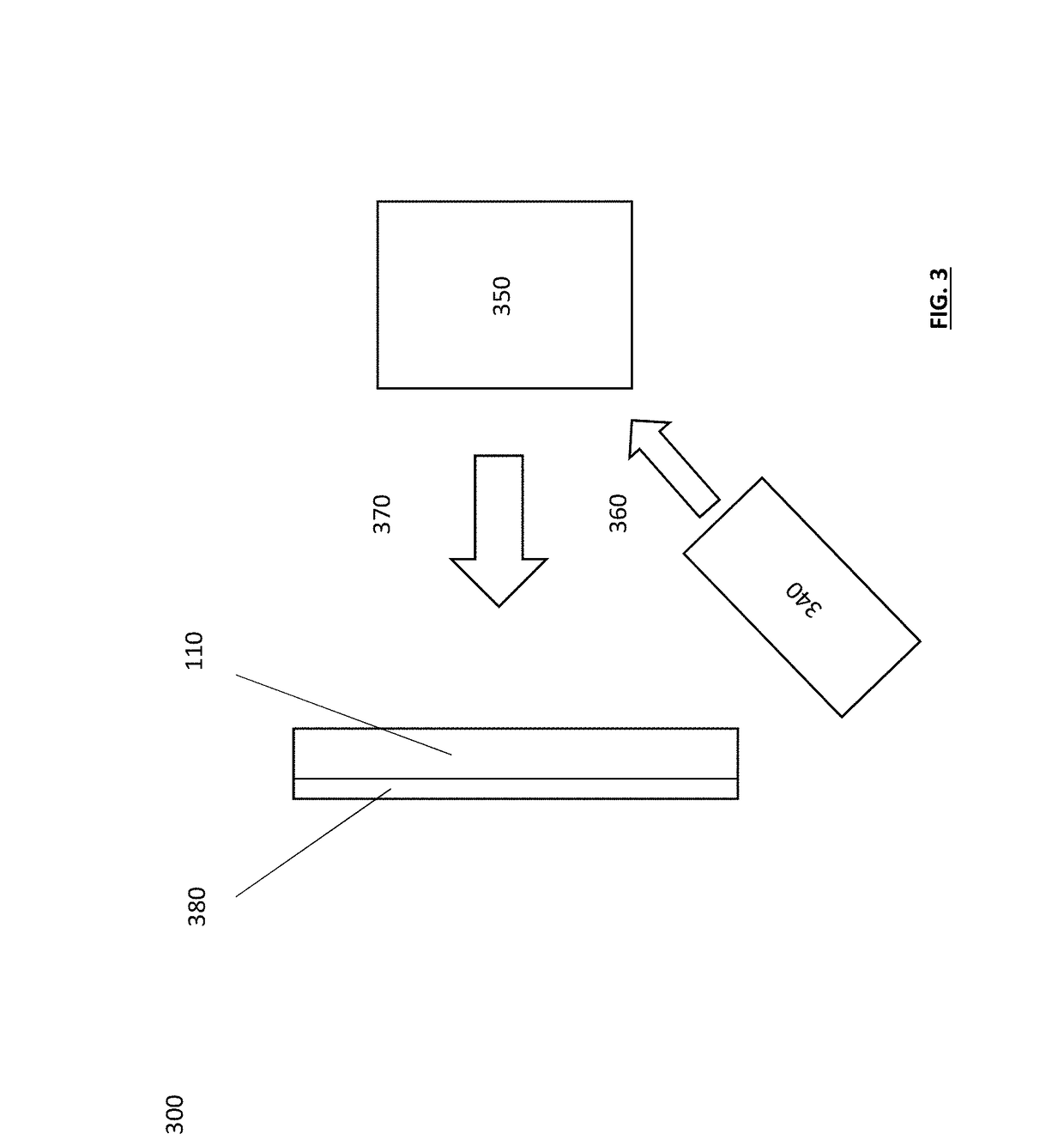Method of bonding a laser activated remote phosphor assembly, method of manufacture and a laser activated remote phosphor assembly
a laser activated remote phosphor and assembly technology, applied in the direction of vacuum evaporation coating, semiconductor devices, coatings, etc., can solve the problems of inherently difficult maintenance and control, glass may spall off upon cooling, and production shut down, so as to improve production quality and production time
- Summary
- Abstract
- Description
- Claims
- Application Information
AI Technical Summary
Benefits of technology
Problems solved by technology
Method used
Image
Examples
Embodiment Construction
[0042]The following detailed description refers to the accompanying drawings that show, by way of illustration, specific details and embodiments in which the invention may be practiced.
[0043]The word “exemplary” is used herein to mean “serving as an example, instance, or illustration”. Any embodiment or design described herein as “exemplary” is not necessarily to be construed as preferred or advantageous over other embodiments or designs.
[0044]The word “plural” and “multiple” are used herein to expressly refer to a quantity greater than one. Accordingly, any phrases explicitly invoking the aforementioned words (e.g. “a plurality of [objects]”, “multiple [objects]”) referring to a quantity of objects is intended to expressly refer more than one of the said objects. The terms “group”, “set”, “collection”, “series”, “sequence”, “grouping”, “selection”, etc., are used herein to mean a quantity equal to or greater than one, i.e. one or more. Accordingly, the phrases “a group of [objects]...
PUM
| Property | Measurement | Unit |
|---|---|---|
| Temperature | aaaaa | aaaaa |
| Thickness | aaaaa | aaaaa |
| Mechanical properties | aaaaa | aaaaa |
Abstract
Description
Claims
Application Information
 Login to View More
Login to View More - R&D
- Intellectual Property
- Life Sciences
- Materials
- Tech Scout
- Unparalleled Data Quality
- Higher Quality Content
- 60% Fewer Hallucinations
Browse by: Latest US Patents, China's latest patents, Technical Efficacy Thesaurus, Application Domain, Technology Topic, Popular Technical Reports.
© 2025 PatSnap. All rights reserved.Legal|Privacy policy|Modern Slavery Act Transparency Statement|Sitemap|About US| Contact US: help@patsnap.com



